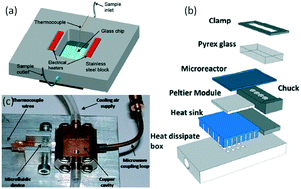Microfluidic approaches for accessing thermophysical properties of fluid systems
Abstract
Thermophysical properties of fluid systems are highly desirable as they are used in many industrial processes both from a chemical engineering point of view and to push forward the development of modeling approaches. To access these data, microfluidic approaches have recently attracted increasing interest as they provide flexible and reliable ways for measurements, leading to fast screening capabilities compared to conventional experimental systems. In this review, we present a general overview of microfluidic methodologies integrating in situ characterization to determine thermodynamic properties of fluid systems. In addition to drastically reducing the time to reach thermodynamic equilibria, one major advantage of microfluidics is to provide optical access to the fluid behavior, even under harsh conditions. Therefore, several in situ characterization techniques can be implemented to get insights into fluid properties. Here, we emphasize approaches developed using high pressure and high temperature microfluidics. Indeed, such conditions are of interest for energy industries and present plenty of challenges. Several recent examples of high pressure microfluidics optical approaches will be detailed, in particular to determine viscosity and density, phase equilibria, mass transfer coefficients and solubility parameters.



 Please wait while we load your content...
Please wait while we load your content...